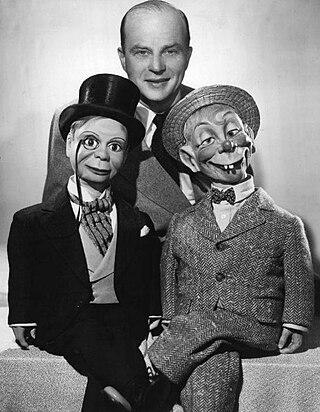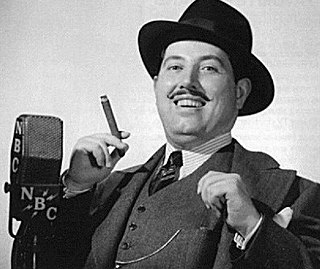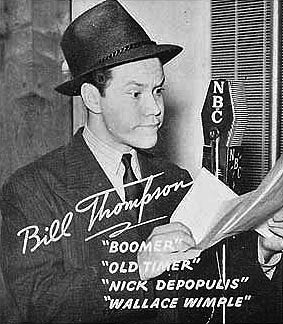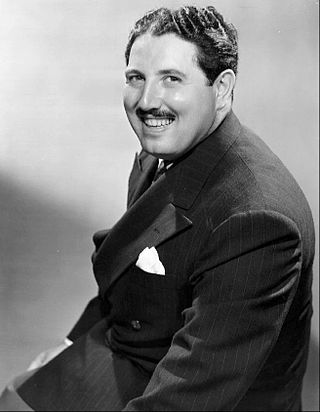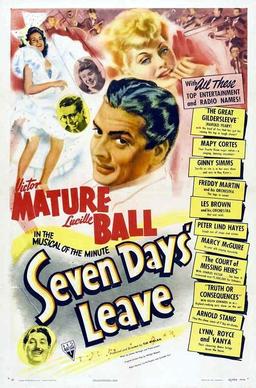Plot
As Fibber McGee and Molly celebrate their 20th anniversary, they throw a large shindig, but everyone declines their invitation to the Silver Tip Lodge at Lake Arcadia. Discouraged, the McGees decide to have their own celebration—to relive their first honeymoon night at the Ramble Inn. Fibber and Molly are again discouraged upon finding that the inn has gone to ruin. Still, they decide to stay the night. The next morning, the McGees leave Ramble Inn and Fibber insists, despite their finances, that they head to Lake Arcadia and spend at least one night at the Silver Tip Lodge.
As Fibber checks into the lodge Molly bumps into her old beau, Otis Cadwalader (Gale Gordon). When Fibber, naturally jealous, has to be cordial to Cadwalader, he replies, "I've got bad news for you...I'm fine!" Also at the lodge, the McGees meet up with some old acquaintances: ventriloquist Edgar Bergen, his puppet, Charlie McCarthy, Throckmorton P. Gildersleeve (Harold Peary) and Abigail Uppington (Isabel Randolph). Fibber, not admitting he is broke, rents the bridal suite and chooses to have their once cancelled anniversary party held at the lodge.
Still in the lobby, Cadwalader asks Fibber and offers to pay him if he can convince Bergen to invest in a synthetic gasoline formula developed by inventor Wallace Wimple (Bill Thompson). Fibber is able to visit Wimple and see his formula in action; he agrees to partner with Cadwalader.
Meanwhile, Bergen and Charlie have been asked by an institute to find a rare silk-spinning moth. During a search, they are met by Gildersleeve's sister, Jean (Ginny Simms), and her troop of girl guides. Bergen successfully finds a specimen and rushes back to the lodge to phone the institute, leaving Charlie to flirt with the girls.
At the McGee's party that night, Fibber arranged for bandleader Ray Noble to provide the musical accompaniment. Charlie continues romancing the girl guides and Fibber talks to Bergen about Cadwalader's scheme. Bergen agrees to write Fibber a check on the condition that it not be cashed until he has a chance to investigate Cadwalader. As soon as Bergen leaves, however, Cadwalader snatches the check out of Fibber's hands. As the party progresses, Abigail Uppington, dressed as an Indian, begins to recite "The Song of Hiawatha." Bergen notices a branch Uppington has clutched in her hand. It is covered with silkworm cocoons. Bergen asked where to find those branches; he is directed by puppet Mortimer Snerd, to an Indian reservation.
Bergen sneaks into the reservation as an Indian squaw, and Charlie as his papoose. When the Indians threaten Bergen, he uses his ventriloquism to throw his voice at a totem pole. The chief of the tribe is fearfully impressed at the speaking totem. As Bergen searches for the cocoons, Charlie makes advances to the other Indian squaws, angering the Indians. Fleeing from the reservation, Bergen and Charlie return to their laboratory with the cocoons.
Back at the Silver Tip Lodge, Fibber tells Molly about his business deal with Cadwalader. However, when Wimple confides that his formula doesn't work, Molly approaches Cadwalader about returning Bergen's money. Meanwhile, Bergen informs Jean of his disappointment when he discovers that the cocoons are too brittle to unweave. Soon after, Fibber arrives with a sample of the formula and the bad news about Wimple's discovery. In the rush of everything that is happening, Charlie accidentally spills the formula on the cocoons. To their delight, Jean and Bergen discover that the formula releases the silk threads. Returning to the lodge, Bergen, Jean, Charlie, and Fibber learn that Molly has driven off in a carriage with Cadwalader.
Bergen and Fibber pursue the carriage on a wagon loaded with dynamite while Jean and Charlie follow by car. The chase ends when Molly pulls the carriage off the road, and the wagon is caught on a cliff. All ends happily as Bergen offers to buy the formula, Molly tells Fibber that she wasn't running away with Cadwalader but was driving him out of town to avoid a scandal. Molly and Fibber, Jean and Bergen embrace to the sound of exploding dynamite, leaving Charlie to say, "Wow! ... Anybody wanna adopt an orphan?"


